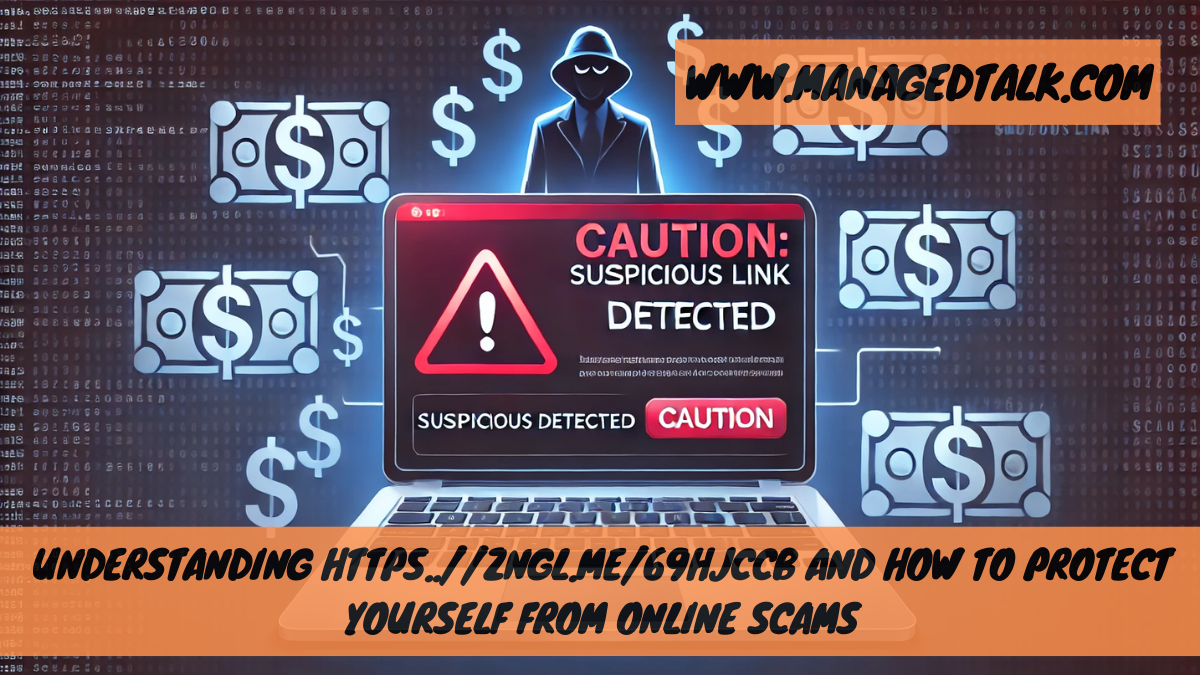The internet has revolutionized how we shop, communicate, and conduct business. However, this convenience also brings risks, especially in the form of online scams. One recent example that has caught attention is the suspicious link, “https..//zngl.me/69hjccb,” which scammers use to lure victims into fraudulent schemes.
“Scammers use links like ‘https..//zngl.me/69hjccb’ to bait users with too-good-to-be-true offers. Always verify unknown links before clicking to protect personal data and devices.”
This article dives deep into what “https..//zngl.me/69hjccb” is, why it’s dangerous, and how you can protect yourself from similar scams.
What Are Online Scams and How Do They Work?
Online scams are deceptive schemes designed to defraud individuals of their money or personal information. These scams can appear in various forms, including fake shopping deals, phishing emails, and malicious websites. Scammers often use psychological tactics and urgency to trick people into acting without thinking.
Key Characteristics of Online Scams:
- Too-Good-To-Be-True Offers: Unrealistic discounts on high-value items, like electronics or luxury clothing.
- Urgent Calls to Action: “Act now before it’s too late!” messaging to rush decision-making.
- Suspicious Links: Shortened URLs or strange domains that redirect users to malicious sites.
Case in Point: “https..//zngl.me/69hjccb”
The link “https..//zngl.me/69hjccb” has been flagged as a scam due to its use in fraudulent advertising campaigns that promise significant discounts to bait users. Links like this often lead to websites designed to steal personal and financial information or install harmful software on a user’s device.
Why “https..//zngl.me/69hjccb” Is a Red Flag
Shortened URLs, such as “https..//zngl.me/69hjccb,” are often used to obscure the real destination of a link. Scammers exploit this technique to bypass security filters and increase the chances of their malicious content being accessed.
Why These Links Are Dangerous:
- Lack of Transparency: The user cannot tell where the link leads just by looking at it.
- Reputable-Looking Landing Pages: Many scam sites mimic well-known brands, making it hard to spot fakes.
- Potential for Malware: Clicking on a suspicious link can initiate the download of harmful software.
Example Scenario: A user receives an email or social media message stating that they’ve won a high-value prize or that there’s a flash sale with unbeatable prices. The message contains a link similar to “https..//zngl.me/69hjccb.” Once clicked, the user might be asked to fill out personal details, inadvertently giving scammers access to sensitive data.
Recognizing the Signs of Scam Websites
Staying safe online means knowing how to identify scam websites before they have a chance to defraud you. Here are some telltale signs to watch for:
- Unusual Domain Names: URLs that are not associated with a reputable brand or include strange combinations of letters.
- Poor Website Design: Scammers often don’t invest much in site design. Typos, low-quality images, and poor formatting can be warning signs.
- No Contact Information: Legitimate businesses provide multiple contact options, including email, phone numbers, and physical addresses.
- Unsecure Payment Gateways: A reliable website will use secure payment systems indicated by “https” in the URL and a padlock symbol.
How to Protect Yourself from Scams Like “https..//zngl.me/69hjccb”
Protection from scams involves a combination of awareness, vigilance, and technical safeguards. Here are some steps to keep your information safe:
1. Use Security Tools
- Browser Extensions: Add-ons such as HTTPS Everywhere and uBlock Origin can help detect malicious sites.
- Antivirus Software: Ensure you have a reputable antivirus program that scans for threats in real-time.
- Two-Factor Authentication (2FA): Use 2FA where possible to add an extra layer of security to your online accounts.
2. Verify Before You Click
- Search for Reviews: Look up any website before making a purchase or sharing personal data.
- Check the URL: Hover over the link to reveal the true destination.
- Avoid Suspicious Short Links: Links like “https..//zngl.me/69hjccb” should be treated with caution.
3. Stay Educated
- Phishing Awareness: Familiarize yourself with common phishing tactics.
- Cybersecurity News: Keep up-to-date with news on scams to be aware of the latest threats.
What to Do If You’ve Clicked on a Suspicious Link
If you suspect that you have clicked on a scam link, quick action can mitigate potential damage.
Immediate Steps to Take:
- Disconnect from the Internet: Temporarily disconnect to prevent further data transmission.
- Run a Security Scan: Use a reliable antivirus tool to check for malware.
- Change Passwords: Change your passwords, especially for accounts linked to financial services or sensitive information.
- Monitor Your Accounts: Keep a close watch on bank statements and emails for unusual activity.
Why People Fall for Scams: The Psychology Behind It
Understanding why people fall victim to scams can help individuals recognize their own vulnerabilities and stay protected.
Common Reasons for Falling for Scams:
- Urgency and Fear: Messages with urgent language can create a sense of fear that bypasses logical thinking.
- Perceived Authority: Scam messages often appear to come from trusted sources, such as government agencies or popular brands.
- Greed or Curiosity: Offers that seem like “free money” or highly discounted products can cloud judgment.
FAQ Section
Q1: How can I verify if a link is safe?
To verify a link, hover over it to see the full URL. Use link checkers like VirusTotal to scan for safety before clicking.
Q2: What should I do if my information is compromised?
Immediately change your passwords, enable 2FA, and notify financial institutions. Consider using identity protection services for added security.
Q3: Why do scammers use short links like “https..//zngl.me/69hjccb”?
Short links obscure the true destination and can bypass security filters. This makes it easier for scammers to trick users into clicking.
Conclusion
Staying safe online requires vigilance and knowledge. Links like “https..//zngl.me/69hjccb” serve as reminders that scammers are continually developing new tactics to deceive users. By recognizing red flags, using appropriate security measures, and taking immediate action when necessary, you can greatly reduce the risk of falling victim to scams.
Be proactive and stay informed—your online safety depends on it.
